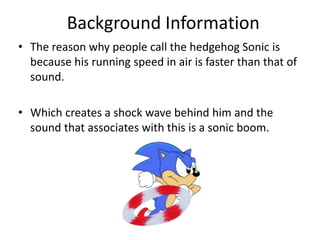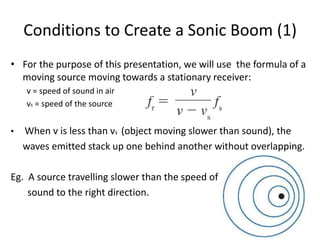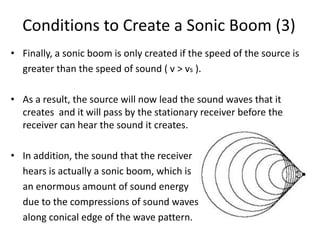This document discusses sonic booms and the conditions needed to create them. Sonic booms occur when an object moves faster than the speed of sound in air. This creates shock waves that combine into a loud boom sound. For a sonic boom to occur, the object's speed must exceed the speed of sound. As it passes a stationary observer, they will hear the boom after the object passes, as the compressed sound waves reach the observer. Famous examples of objects breaking the sound barrier and creating sonic booms include supersonic jets and the fictional character Sonic the Hedgehog.








